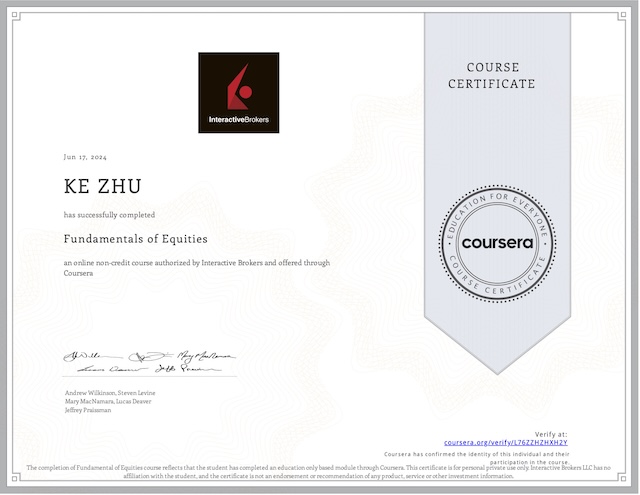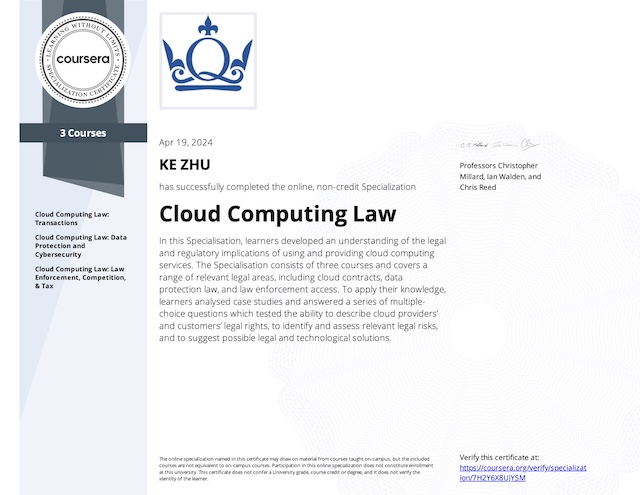Along with assets, corporate formation also routinely involves the transfer and assumption of liabilities. The corporation is taking responsibilities for such liabilities, but an important tax issue arises. Does the assumption of liabilities by the corporation (transferee) constitute boot received by the shareholder (transferer)?
Assumption of Liabilities
Recall that in addition to the stock of corporation, shareholders can also receive “boot”. Corporation’s assumption and subsequent payment of the shareholders liabilities may also constitute boot. Boot provides the shareholder with some wherewithal to pay tax on a realized gain. For instance: shareholders can receive debt relief, which is typically considered gross income.
There are two primary types of liabilities:
| Recourse | Borrower is personally liable. The assumption of a recourse liability means that “if, as determined on the basis of all facts and circumstances, the transferee has agreed to, and is expected to satisfy such liability (or a portion) whether or not the transferor has been relieved of such liability”. |
| Non-recourse | Borrower is NOT personally liable. Lender can only pursue collateral. The assumption of a non-recourse liability occurs when the transferee corporation takes the asset subject to the liability. |
First note, in a related, but different context of corporate reorganizations, the US Supreme Court held in the United States v Hendler that the assumption and subsequent payment of the shareholder (transferor) liability by a corporation (transferee) constituted boot to the shareholder (transferor) triggering potential gain recognition.
To prevent the decision above from hindering corporate formations, Congress enacted a new rule, Code §357(a) stipulates that the assumption of a liability by the transferee in a §351 transaction will
- neither constitute boot
- nor prevent the exchange from qualifying under §351
In essence, the statute delays any gain recognition attributed to liability assumption, by altering the transfer as basis in the stock received. However, §357(b) and (c) provided two key exceptions to this general rule:
- if any of the liabilities assumed by the corporation are contributed with the purpose of avoiding federal income tax or if there is no business purpose for the assumption of liabilities, then all the liabilities assumed are considered boot received by the shareholder.
- Even when liability assumption is not boot, the shareholder (transferor) must recognize gain to the extent that liabilities assumed by the corporation exceed the aggregate tax basis of the properties transferred by the shareholder.
Recognized gain = Liabilities assumed - Aggregated basis of properties- This provision does not apply for the assumption of liabilities would give rise to a deduction when paid. For example, when a corporation assumes the accounts payable of a cash method sole proprietorship.
Example: Individual A transferred land with an adjusted basis of $20,000, and a fair market value of $56,000 to Corp B in exchange for all of its stock worth $30,000. The land was subject to a liability of $26,000, which Corp B assumed with no tax avoidance motives. What amount, if any, do Individual A and Corp B recognize?
For Individual A:
Stock value $30000
+ Liability assumed $26000
= Total realized $56000
- Adjusted basis $20000
= Realized gain $36000
Liability assumed $26000
- Adjusted basis $20000
= Recognized gain $ 6000
Exchange basis $20000
+ Recognized gain $ 6000
- FMV of boot $ 0
- Liability assumed $26000
= Stock basis $ 0If individual A immediately sells all the stock, s/he will have $30000 gain. He had recognized $6000 gain due to liability assumed. Sum of the gain from selling the stock ($30000), and the gain from the liability assumption ($6000), will be equal to the realized gain ($36000).
For Corp B:
Exchange basis (from A) $20000
+ Recognized gain (from A) $ 6000
= Stock basis $26000Service and Property
Recall that the provision of services does not constitute the transfer of property for purposes of §351, instead any stock received by the service provider is viewed as compensation for the services, and is not considered when assessing control.
If a person transfer services and property to a corporation in exchange for stock, taxable income results
- for the value of the stock related to the services
- but not for the stock related to the property
assuming the other requirements of §351 are satisfied.
The person is viewed as transferor for purposes of control, if adequate property is transfered. How much is adequate? The regulations require that the person providing services must also transfer property with more than a relatively small value compared to the services. If
FMV of property tranferred ≥ 10% of Stock owned / received for servicesthen §351 applies.
Capital Contribution
A capital contribution is a transfer of property by a person, which may or may not be a current shareholder, to a corporation for which no stock or property is received in return.
Code §118(a) provides that a corporation does not include in gross income any contributions of money or property from shareholders to the capital of the corporation. In other words, the corporation receiving a capital contribution from a shareholder does not recognize any income or gain on the transfer of property. The corporation receives a carryover/exchange basis in the property, which is the same basis treatment as in most other non-recognition transactions such as §1032.
Contributions of capital by non-shareholders however, received special treatment. The scenario commonly arises when a governmental entity, such as a municipality, transfers real estate to a corporation to induce the corporation to locate its operations within its border.
| The contribution occurred in a tax year | |
| after 2017 | A corporation includes in gross income any contributions of money or property from non-sharesholders. Corporation receives fair market value basis. |
| before 2018 | A corporation does not includes in gross income any contributions of money or property from non-sharesholders. If non-cash property, corporation receives zero basis. If cash, corporation reduces basis in other property by amount of cash. |
Capital Structure
Taxpayers have considerable flexibility to design contracts and financial instruments that can be treated as either debt or equity to accommodate different risk and other preferences, for example: tax purposes. The flexibility stems from the fact that there is not clear definition of debt/equity in Internal Revenue Code or Treasury Regulations. IRS also does not provide guidance because in its view, the issue is factual in nature.
Consequently, differences in the tax treatment of debt and equity ultimately create incentives to use one or the other:
| Issuance | Interests / Dividends | |
| Debt | Issuer: No income Investor: No deduction | Issuer: No deduction for principal Deduction for interest repaid Investor: No income for principal Interest income are taxable (ordinary) |
| Equity | Issuer: No income Investor: No deduction | Issuer: No deduction No deduction for dividends Investor: No income Dividend income are taxable (capital) |
Corporations have an incentive to characterize an instrument as debt over equity, because interest payments on debt are tax deductible whereas dividend payments on equity are not. Thin capitalization is a subjective concept that is said to occur when shareholder debt is high, relative to shareholder equity. If a corporation is deemed thinly capitalized, the IRS claims that debt is really equity, and denies any interest expense deductions.
Individual investors likely prefer dividend income over interest income, because dividend income is subject to preferential lower capital gains tax rate where as interest income is taxed at ordinary tax rates.
Worthless Investments
Technically, a transaction is not realized unless there is a measurable change in property rights to the investment. Thus without a special rule, an investor may never realize a loss on a worthless investment because very few would ever want property rights to a worthless investment.
If any security which is a capital asset becomes worthless during the taxable year, the loss resulting therefrom shall, for purposes of this subtitle, be treated as a loss from the sale or exchange on the last day of the taxable year of a capital asset.
Code §165(g1)
Security is defined as a share of stock, right to subscribe to stock, or bond, note or other form of indebtedness issued by a corporation. This provision applies to complete worthlessness, not a partial decline in value. The burden of proving complete worthlessness is on the taxpayer, not the IRS. If an investment is partially worthless, one way for an investor to realize and recognize such loss is to sell the investment at fair market value to an unrelated party.
Stocks and bonds can be ordinary assets rather than capital assets to some taxpayers. For example, if an investment broker holds stocks as inventory in hopes of selling them to clients, the loss on the worthlessness of such stock receives ordinary loss treatment.
In the case of an affiliated corporation, an ordinary loss may be allowed for worthless investments. A corporate shareholder must:
- Own at least 80% of the voting power of all classes of stock and
- Own at least 80% of all classes of non-voting stock
- Derive 90% of its aggregate gross receipts from non-passive sources of income
to deem the loss in worthlessness of security as ordinary.
Treatment of Bad Debts
Aside from worthless debt and equity investments, insolvency can result in bad debts to those who have previously extended credit to the corporation. Any deductions for such bad debts are classified as either business or non-business bad debts. The tax treatment is different.
| Business bad debt treatment | Generally, limited to corporate investors Deducted as ordinary loss Can create a net operating loss Deduction for partial worthlessness |
| Non-business bad debt treatment | Generally, limited to non-business individual investors Deducted as short-term capital loss Can NOT create a net operating loss No deduction for partial worthlessness |
Small Business Stock
Insolvency is more common in small business than large publicly traded firms. Investors might be more reluctant to hold debt and stock of small businesses. To help mitigate such concern, Congress provides a small business investment incentive in Code §1244: Losses on small business stock. In particular, section 1244 permits ordinary loss treatment for losses on the sale or worthlessness of small business corporation stock. Recall the ordinary loss can be used to offset income, typically subject to higher tax rates.
§1244 only applies to individual shareholders who are the original recipients of the stock. A small business corporation is defined as a corporation where the aggregate amount of money and property received for the stock or as the contribution of capital does not exceed one million dollars.
There are limitations on the amount of loss subject to such favorable tax treatment:
- $50,000 per year for single shareholders, or
- $100,000 per year for married filing jointly shareholders
If the amount of the loss exceeds these amounts, the excess amount remains a capital loss.
When the so-called §1244 stock, issued by a corporation in exchange for property that immediately before the exchange, has a built-in loss, there are also special rules. To determine the amount of ordinary loss upon the sale or worthlessness of such stock, the stock basis is reduced to the fair market value of the property on the date of the exchange. This treatment is similar to how built-in losses were handled in a section 351 exchange.
There are some favorable tax treatments available for gains on the disposition of small business corporation stock.
Code §1202 permits the exclusion of all or some of the gain depending on when the stock was acquired. For instance, for qualified stock acquired:
- After September 27th 2010, all of the gain is excluded
- Before September 27th 2010, either 50 percent or 75 percent of the gain could be excluded
Also, Code §1045 allows an investor to completely avoid or at least defer gain recognition, if the investor ultimately reinvests in different qualified small business stock within 60 days.
My Certificate
For more on Taxation for Corporation Formation: Liabilities, Capital and Loss, please refer to the wonderful course here https://www.coursera.org/learn/taxation-business-entities-part-1
Related Quick Recap
I am Kesler Zhu, thank you for visiting my website. Check out more course reviews at https://KZHU.ai



